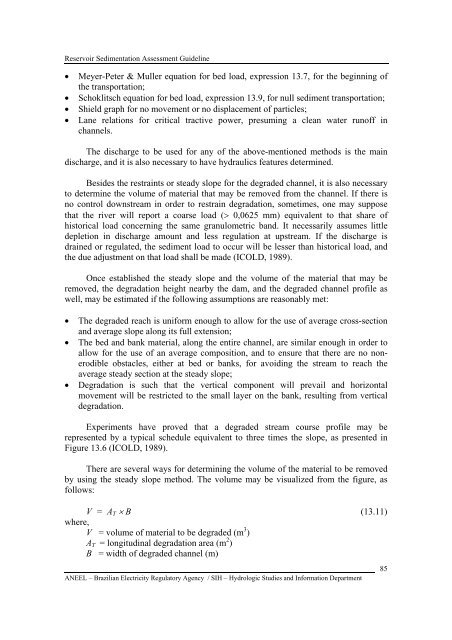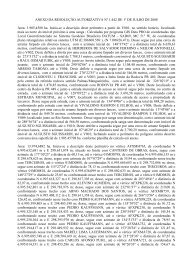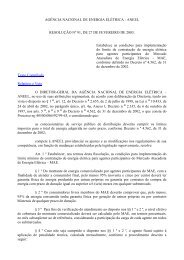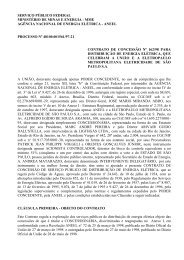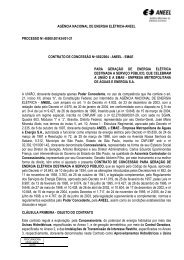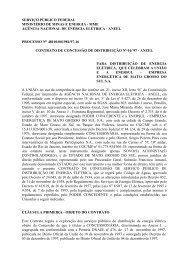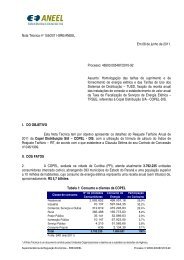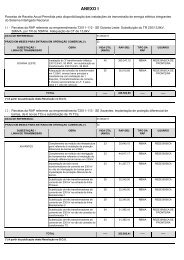RESERVOIR SEDIMENTATION ASSESSMENT GUIDELINE - Aneel
RESERVOIR SEDIMENTATION ASSESSMENT GUIDELINE - Aneel
RESERVOIR SEDIMENTATION ASSESSMENT GUIDELINE - Aneel
Create successful ePaper yourself
Turn your PDF publications into a flip-book with our unique Google optimized e-Paper software.
Reservoir Sedimentation Assessment Guideline• Meyer-Peter & Muller equation for bed load, expression 13.7, for the beginning ofthe transportation;• Schoklitsch equation for bed load, expression 13.9, for null sediment transportation;• Shield graph for no movement or no displacement of particles;• Lane relations for critical tractive power, presuming a clean water runoff inchannels.The discharge to be used for any of the above-mentioned methods is the maindischarge, and it is also necessary to have hydraulics features determined.Besides the restraints or steady slope for the degraded channel, it is also necessaryto determine the volume of material that may be removed from the channel. If there isno control downstream in order to restrain degradation, sometimes, one may supposethat the river will report a coarse load (> 0,0625 mm) equivalent to that share ofhistorical load concerning the same granulometric band. It necessarily assumes littledepletion in discharge amount and less regulation at upstream. If the discharge isdrained or regulated, the sediment load to occur will be lesser than historical load, andthe due adjustment on that load shall be made (ICOLD, 1989).Once established the steady slope and the volume of the material that may beremoved, the degradation height nearby the dam, and the degraded channel profile aswell, may be estimated if the following assumptions are reasonably met:• The degraded reach is uniform enough to allow for the use of average cross-sectionand average slope along its full extension;• The bed and bank material, along the entire channel, are similar enough in order toallow for the use of an average composition, and to ensure that there are no nonerodibleobstacles, either at bed or banks, for avoiding the stream to reach theaverage steady section at the steady slope;• Degradation is such that the vertical component will prevail and horizontalmovement will be restricted to the small layer on the bank, resulting from verticaldegradation.Experiments have proved that a degraded stream course profile may berepresented by a typical schedule equivalent to three times the slope, as presented inFigure 13.6 (ICOLD, 1989).There are several ways for determining the volume of the material to be removedby using the steady slope method. The volume may be visualized from the figure, asfollows:V = A T × B (13.11)where,V = volume of material to be degraded (m 3 )A T = longitudinal degradation area (m 2 )B = width of degraded channel (m)ANEEL – Brazilian Electricity Regulatory Agency / SIH – Hydrologic Studies and Information Department85


